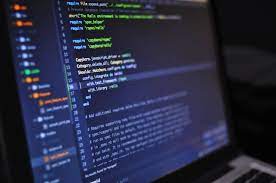Understanding Artificial Intelligence Programming
Artificial Intelligence (AI) programming is transforming the way we interact with technology, enabling machines to perform tasks that typically require human intelligence. From voice recognition systems to autonomous vehicles, AI programming is at the forefront of technological innovation.
What is Artificial Intelligence Programming?
AI programming involves creating algorithms and models that allow computers to learn from data, make decisions, and perform tasks autonomously. This field combines computer science with cognitive sciences to simulate human-like intelligence in machines.
Key Concepts in AI Programming
- Machine Learning: A subset of AI that focuses on building systems that can learn from data and improve over time without being explicitly programmed.
- Neural Networks: Inspired by the human brain, these are networks of algorithms designed to recognize patterns and interpret data through a process similar to how humans learn.
- Natural Language Processing (NLP): This involves teaching machines to understand and respond to human language, enabling applications like chatbots and language translation services.
- Computer Vision: The field of enabling computers to interpret and make decisions based on visual data from the world around them.
The Role of Programming Languages in AI
Certain programming languages are particularly suited for AI development due to their features and community support. Some of the most popular languages include:
- Python: Known for its simplicity and readability, Python offers numerous libraries such as TensorFlow, Keras, and PyTorch that facilitate AI development.
- R: Primarily used for statistical analysis, R provides tools for data manipulation which are essential in machine learning projects.
- Lisp: One of the oldest languages used in AI development due to its excellent support for symbolic reasoning and rapid prototyping capabilities.
The Impact of AI Programming
The impact of AI programming is vast, influencing various sectors such as healthcare, finance, transportation, and entertainment. In healthcare, AI systems assist in diagnosing diseases more accurately. In finance, they analyze market trends for better investment strategies. Autonomous vehicles rely heavily on computer vision and machine learning algorithms developed through AI programming.
The Future of AI Programming
The future holds exciting prospects for AI programming as advancements continue at a rapid pace. Emerging areas like quantum computing could potentially revolutionize how we approach complex problem-solving tasks with even greater efficiency. As ethical considerations grow alongside technological capabilities, developers will need to ensure responsible use while pushing the boundaries of what machines can achieve.
The journey into artificial intelligence is just beginning; however, its potential already promises significant transformations across industries worldwide. As technology evolves further into this realm driven by innovative minds globally collaborating towards common goals – humanity stands poised on brink unprecedented change fueled ingenuity creativity brought forth through power intelligent automation systems built upon foundation solid principles established within realm artificial intelligence programming itself!
Frequently Asked Questions About Artificial Intelligence Programming: Salaries, Languages, and Learning Paths
- How much do AI programmers make?
- What is artificial intelligence programming?
- What programming language is used for artificial intelligence?
- Can I learn AI without coding?
- What are the 4 types of AI software?
- What is best programming language for artificial intelligence?
How much do AI programmers make?
AI programmers are among the most sought-after professionals in the tech industry, and their salaries reflect this demand. On average, AI programmers in the United States can expect to earn between $90,000 and $150,000 per year, depending on their experience, education, and location. Those with advanced degrees or specialized skills in machine learning or deep learning may command even higher salaries. In major tech hubs like Silicon Valley or New York City, compensation packages often include bonuses and stock options that can significantly increase overall earnings. As AI technology continues to evolve and integrate into various sectors, the demand for skilled AI programmers is likely to grow, potentially driving salaries even higher.
What is artificial intelligence programming?
Artificial intelligence programming refers to the process of developing algorithms and models that enable machines to exhibit intelligent behaviors and perform tasks typically requiring human intelligence. It involves creating software systems that can learn from data, make decisions, and adapt to new situations autonomously. By leveraging concepts from computer science and cognitive sciences, artificial intelligence programming aims to simulate human-like intelligence in machines, enabling them to analyze complex patterns, solve problems, and interact with their environment in ways previously thought only possible by humans.
What programming language is used for artificial intelligence?
When it comes to artificial intelligence programming, several programming languages are commonly used due to their unique features and community support. Python is the most popular choice because of its simplicity, readability, and extensive libraries such as TensorFlow, Keras, and PyTorch that facilitate AI development. R is favored for statistical analysis and data manipulation, making it ideal for machine learning projects. Java is appreciated for its portability and performance in large-scale systems. Additionally, languages like Lisp are used for their symbolic reasoning capabilities, while Prolog is employed in AI applications that require complex logic programming. Each language offers distinct advantages, allowing developers to choose based on the specific needs of their AI projects.
Can I learn AI without coding?
While having a background in coding can be beneficial for understanding and developing artificial intelligence applications, it is possible to learn about AI concepts without extensive programming knowledge. Many online platforms and educational resources offer courses that introduce the fundamentals of AI, covering topics like machine learning, neural networks, and data analysis in an accessible manner. These courses often use visual tools and software with user-friendly interfaces to help learners grasp complex ideas without diving deep into code. However, for those interested in creating their own AI models or contributing to AI development projects, acquiring some level of coding proficiency is recommended to fully engage with the technical aspects of the field.
What are the 4 types of AI software?
Artificial intelligence software can be categorized into four main types based on their capabilities and applications: reactive machines, limited memory, theory of mind, and self-aware AI. Reactive machines are the most basic type of AI, designed to perform specific tasks without using past experiences to inform future actions. They operate solely on current inputs and predefined rules. Limited memory AI, on the other hand, can use past data and experiences to make informed decisions, which is commonly used in applications like self-driving cars. Theory of mind AI represents a more advanced stage where systems can understand emotions and human mental states, enabling more sophisticated interactions. Lastly, self-aware AI is a theoretical concept where machines possess consciousness and self-awareness, allowing them to understand their own existence and make independent decisions. While the first two types are widely in use today, theory of mind and self-aware AI remain largely in the research phase.
What is best programming language for artificial intelligence?
When considering the best programming language for artificial intelligence, Python often stands out as the top choice among developers. Its popularity is largely due to its simplicity, readability, and a vast ecosystem of libraries and frameworks such as TensorFlow, Keras, and PyTorch that streamline AI development. Python’s extensive community support also provides ample resources for beginners and experts alike. However, other languages like R are favored for statistical analysis tasks in AI, while Java is appreciated for its performance and scalability in large-scale applications. Ultimately, the best language depends on the specific requirements of the project and the developer’s familiarity with the language.


